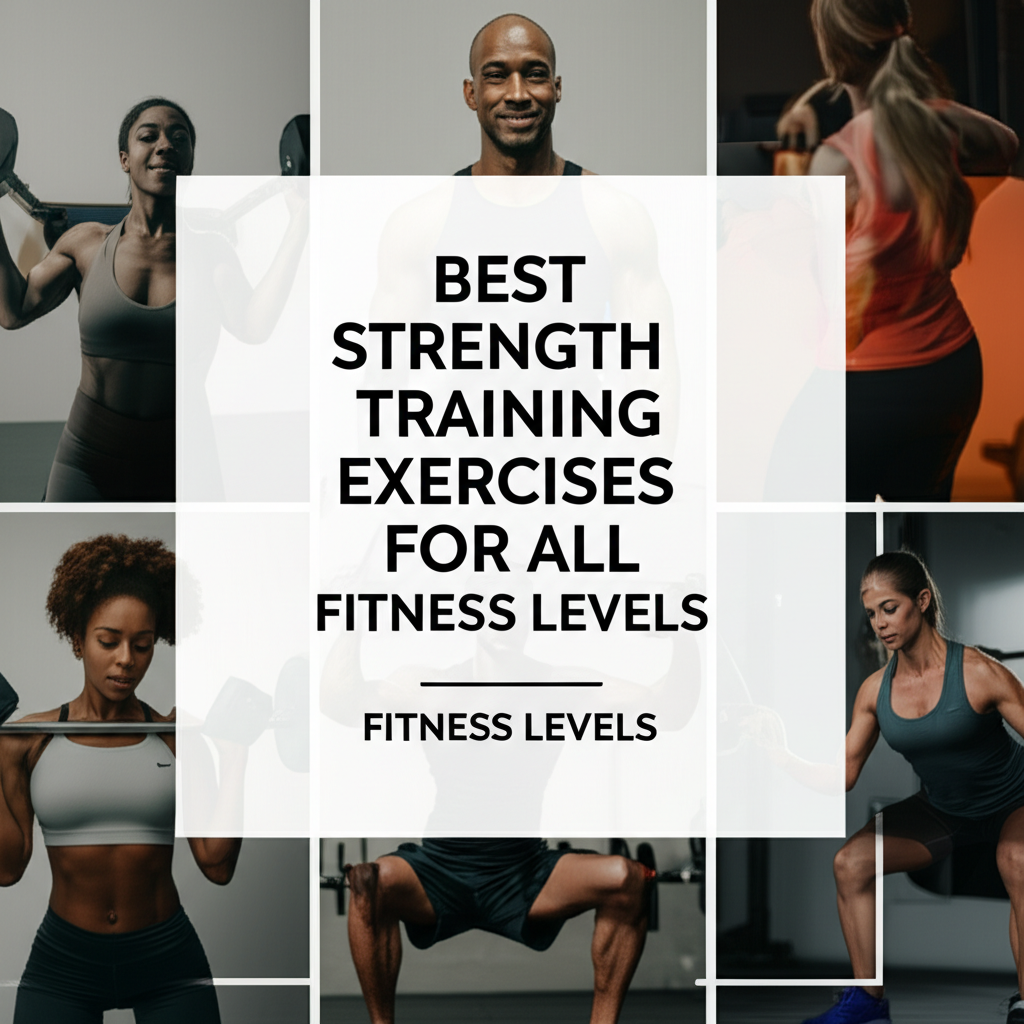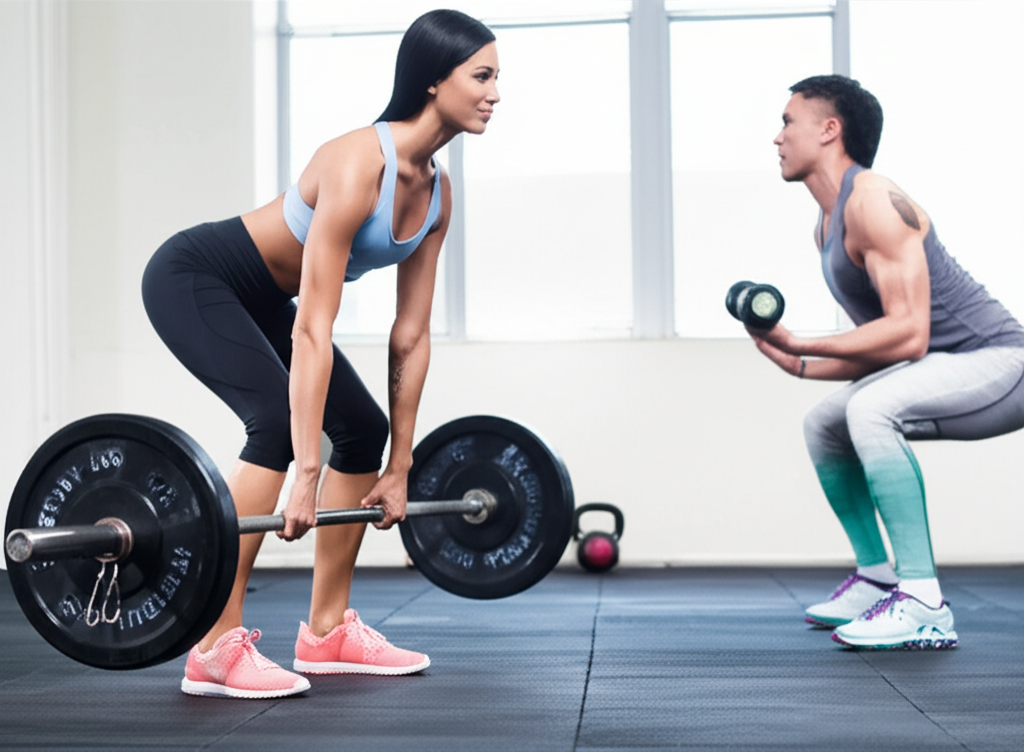Best Strength Training Exercises for All

Best strength training exercises for all fitness levels build muscle, boost metabolism, and improve overall health. These simple, effective moves can be easily adapted for beginners and experienced individuals alike.
Key Takeaways

Build foundational strength with compound movements.
Progress safely by mastering form and gradually increasing weight.
Include exercises targeting major muscle groups for balanced development.
Listen to your body and prioritize rest for recovery.
Consistency is key for long-term strength gains.
Strength Training: Your Path to a Stronger You
Embarking on a strength training journey can feel a little daunting, especially when you’re just starting out. You might wonder which exercises are truly effective and safe for everyone, regardless of their current fitness level. It’s easy to get lost in the maze of gym equipment and complex routines. But here’s the good news: building a stronger you doesn’t have to be complicated. This guide will walk you through the best strength training exercises that are adaptable for all, ensuring you can build muscle, boost your health, and gain confidence with every rep.
Why Strength Training is for Everyone
Strength training, also known as resistance training, is more than just building big muscles. It’s a powerful tool for enhancing your overall well-being. For beginners, it’s the perfect way to establish a solid foundation, improving posture and reducing the risk of injuries. As you get stronger, it continues to offer benefits like increased metabolism, better bone density, and improved mood.
According to the Mayo Clinic, strength training helps you manage or lose weight and boosts your metabolism, meaning you burn more calories even at rest. It also improves your quality of life, making everyday activities easier and more enjoyable. No matter your age or fitness background, incorporating strength training into your routine is a worthwhile investment in your health.
Choosing the Best Strength Training Exercises for All Fitness Levels
The concept of “best” exercises often depends on individual goals and current capabilities. However, certain movements stand out because they work multiple muscle groups simultaneously, are highly adaptable, and provide significant benefits. These are often referred to as compound exercises.
The Power of Compound Movements
Compound exercises are the cornerstone of an effective strength training program. They involve multiple joints and muscle groups working together. This makes them incredibly efficient, allowing you to get a full-body workout in less time. For beginners, mastering these fundamental movements builds necessary coordination and strength. For advanced individuals, they remain the most effective way to build mass and strength.
Unlike isolation exercises, which target a single muscle group, compound movements mimic real-life activities and prepare your body for physical challenges. Think of lifting a heavy box or climbing stairs – these actions require the coordinated effort of many muscles.
Squats: The King of Lower Body Exercises
The squat is a fundamental movement pattern that works your quadriceps, hamstrings, glutes, and core. It’s a powerful exercise for building lower body strength and overall functional fitness.
How to Perform a Basic Bodyweight Squat (Beginner):
1. Stand with your feet shoulder-width apart, toes pointing slightly outward.
2. Keep your chest up and your back straight.
3. Lower your hips backward and down as if sitting into a chair.
4. Aim to get your thighs parallel to the floor, or as low as you comfortably can while maintaining good form.
5. Push through your heels to return to the starting position.
Progression (Intermediate/Advanced):
Goblet Squat: Hold a dumbbell or kettlebell at your chest. This adds weight and helps with torso uprightness.
Barbell Back Squat: Place a barbell across your upper back. This is a classic strength-building exercise.
Front Squat: Hold a barbell across the front of your shoulders. This variation emphasizes the quads more.
Deadlifts: Building Full-Body Power
The deadlift is another foundational compound exercise that works almost every major muscle group, including the back, legs, glutes, and forearms. It’s renowned for its ability to build raw strength and muscle mass.
How to Perform a Basic Romanian Deadlift (RDL) with Dumbbells (Beginner-Friendly):
1. Stand with your feet hip-width apart, holding a dumbbell in each hand in front of your thighs.
2. Keep a slight bend in your knees throughout the movement.
3. Hinge at your hips, pushing your glutes backward and lowering the dumbbells down your shins. Keep your back straight and your core engaged.
4. Lower the dumbbells until you feel a stretch in your hamstrings, usually around mid-shin level.
5. Squeeze your glutes and hamstrings to pull yourself back up to a standing position.
Progression (Intermediate/Advanced):
Conventional Deadlift: Lift a barbell from the floor. This requires more technique but builds immense strength.
Sumo Deadlift: Use a wider stance than a conventional deadlift.
Trap Bar Deadlift: Performed with a hexagonal bar, often considered more beginner-friendly and safer for the lower back while still building significant strength.
Source: National Strength and Conditioning Association (NSCA)
Push-Ups: A Versatile Upper Body Builder
Push-ups are a fantastic bodyweight exercise that targets your chest, shoulders, triceps, and core. They can be easily modified to suit any fitness level.
How to Perform a Standard Push-Up (Beginner/Intermediate Option):
1. Start in a plank position with your hands slightly wider than shoulder-width apart.
2. Keep your body in a straight line from head to heels, engaging your core.
3. Lower your chest towards the floor by bending your elbows. Keep your elbows tucked slightly, not flaring straight out to the sides.
4. Push through your hands to return to the starting position.
Modifications:
Knee Push-Ups (Beginner): Perform the push-up motion on your knees instead of your toes.
Incline Push-Ups (Beginner): Place your hands on an elevated surface like a bench or counter. The higher the surface, the easier the exercise.
Decline Push-Ups (Advanced): Elevate your feet with your hands on the floor. This increases the difficulty by shifting more weight to your upper body.
Rows: Balancing Pushing Movements
For every pushing movement like the push-up, you need a pulling movement to maintain muscular balance and prevent imbalances. Rows are excellent for strengthening your back muscles, including the rhomboids and traps, as well as your biceps.
* How to Perform a Dumbbell Row (Beginner/Intermediate):
1. Place
